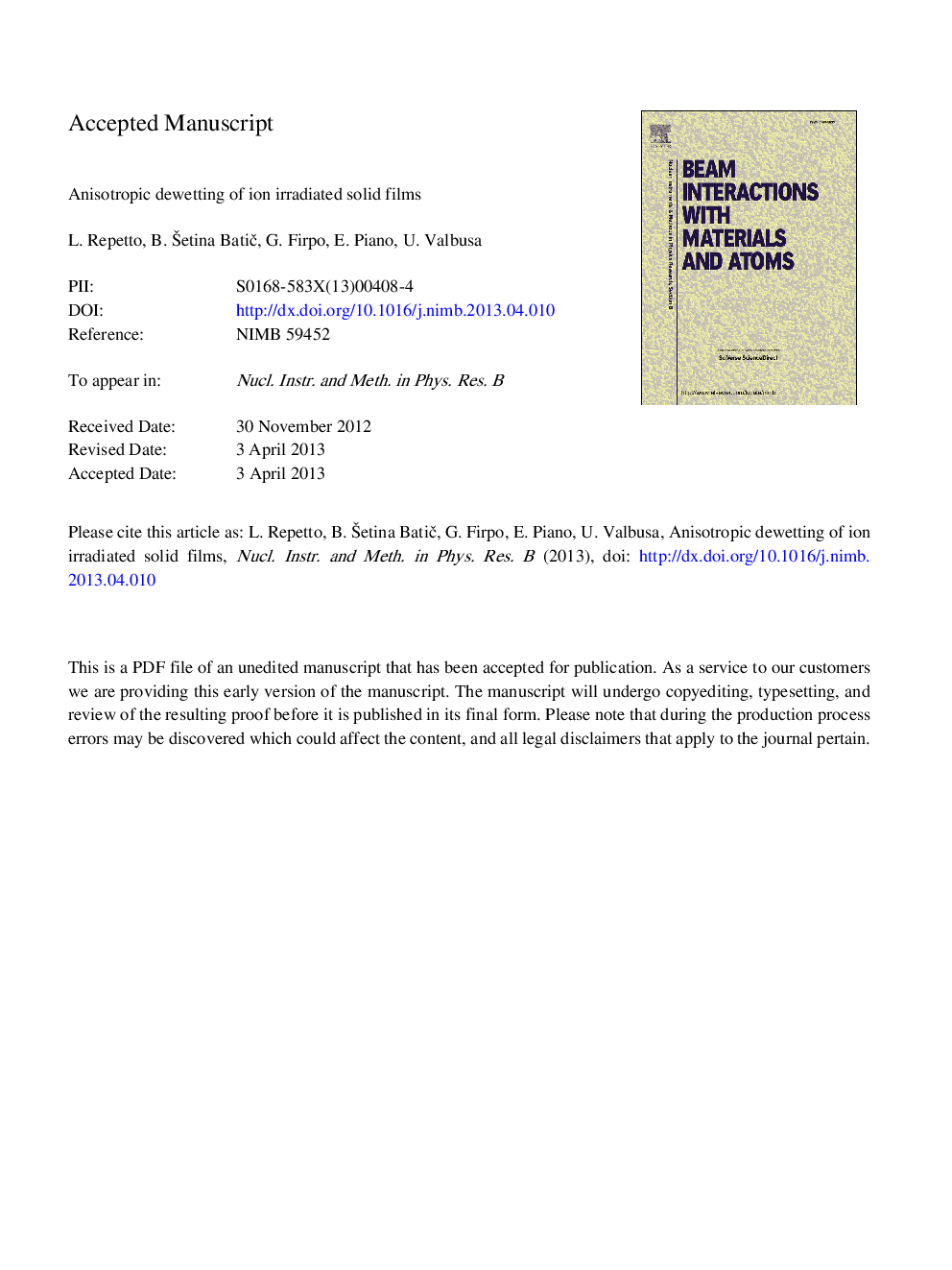| Article ID | Journal | Published Year | Pages | File Type |
|---|---|---|---|---|
| 8042423 | Nuclear Instruments and Methods in Physics Research Section B: Beam Interactions with Materials and Atoms | 2013 | 15 Pages |
Abstract
Experiments of irradiation with 30Â keV Ga ions were conducted on ultrathin chromium films on rippled silicon substrates. The evolution of their surface morphology, as detected by real time scanning electron microscopy, shows an apparent differential sputtering yield for regions of positive and negative curvature which is in contrast with the standard theory for curvature depending sputtering yield. In particular, at the end of the irradiation process, chromium wires are left in the valleys of the substrate. This result was explained in terms of local melting caused by the ion impact and of a process of dewetting under the concurring actions of surface tension and Van der Waals forces while ion sputtering is active. The interpretation of the reported experimental results are fully supported by numeric simulations implementing the same continuum model used to explain ion induced spinodal dewetting. This hierarchical self-organization process breaks the symmetry of previously demonstrated ion induced dewetting, making possible to create new structures by using the same fundamental effects.
Related Topics
Physical Sciences and Engineering
Materials Science
Surfaces, Coatings and Films
Authors
L. Repetto, B. Å etina BatiÄ, G. Firpo, E. Piano, U. Valbusa,
